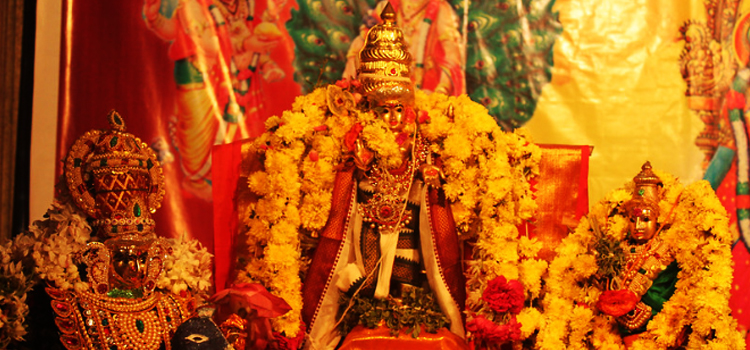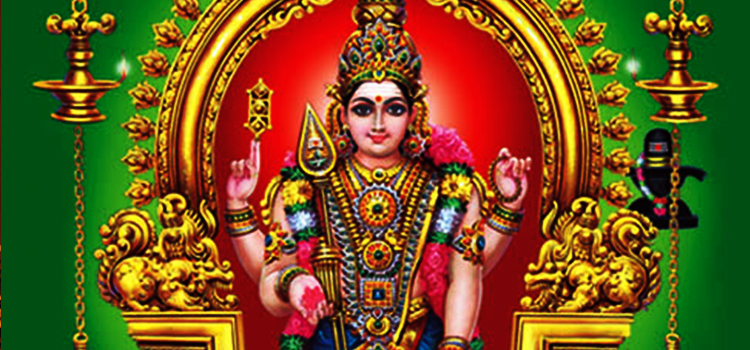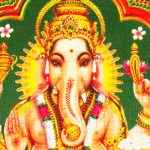Introduction
Shasti falls on the sixth day of every lunar fortnight and occurs twice in a lunar month. Shasti falls during the Shukla Paksha (waxing phase of the Moon) and the Krishna Paksha (waning phase of the Moon). Shasti that occurs in the Krishna Paksha is associated with Subramanya or Murugan the God of War, the son of Shiva and Parvati.
People belonging to the Tamil community consider Shasti to be an auspicious day and dedicate it to the worship of Murugan. People observe fast on this day, worship Murugan, and invoke his blessings.
Legend of Shasti
According to Hindu belief, Shiva created Murugan from his third eye that denotes the birth of higher consciousness. It helps renew the spiritual energy within us to regain consciousness. Legend has it that it was on Shasti that Murugan defeated the demon Soorapadman. The widely popular belief is that Shiva created Skanda to destroy the demons creating havoc and harassing the Devas. The Skanda Shasti festival is in celebration of Murugan’s victory over the demon, Soorapadman, after a battle that lasted six days.
People celebrate the festival of Skanda Shasti as a symbol of the triumph of good over evil. According to the Skanda Purana, the longest of the 18 Mahapuranas, the demons led by Tarakasura, Simhamukha, and Soorapadman were creating havoc by tormenting the Devas, and they also took over the Earth. They took pleasure in torturing the Devas and humans. They went on a rampage, destroying anything that belonged to the Devas.
The demon Soorapadman had a boon that only a son of Shiva could destroy him. The demon thought that Shiva had gone into deep meditation after the death of his wife Sati and would not re-emerge from it. The Devas fell on Shiva’s feet, imploring him to save them, but he was in deep meditation. Brahma, the God of Creation, advised them to take the help of Kama Dev (Manmatha) to invoke desire in Shiva. He succeeded in his mission. However, Shiva was furious that his meditation was disturbed and burnt Kama Dev to ashes, using his third eye.
The power that emanated as a ball of fire formed from the third eye was divided into six parts and settled in the Ganga, who deposited the six pieces in the forest, and they assumed the form of six children. Six Karthigai maidens looked after the six children. Goddess Parvati later combined the six children into one. Murugan is often depicted with six faces and twelve arms and called Arumugha or the six-faced one (Aru means ‘six’ and mugham means ‘face’).
The demons continued their rampage and held Indra, the King of the Gods, as well as other Devas and saints as a hostage. Subramanya assumed the role of the Army General of the Devas and set out for battle with the demons.
In the final battle that ensued, Murugan killed Soorapadman with his Vel (spear). This act of Murugan is called Sooorasamharam. The main Skanda Shasti festival is held on this day to commemorate Murugan’s victory over the demon Soorapadman. Devotees chant ‘Vetrivel’ and ‘Vel Muruga Vel’ on Skanda Shasti, celebrating the victory.
Rituals Observed During Shasti Vrat
People observe a fast on Shasti, which is the most significant part of the ceremony. They follow a partial or full fasting to appease Murugan. Vrat in Sanskrit means ‘vow’ and devotees practice devotion to Murugan through the austerity of fasting. Devotees observe a disciplined lifestyle seeking good health and happiness, purifying the mind through worship.
For the Skanda Shasti Vrat, the auspicious Thithi occurs when the Shasti Thithi coincides with Panchami Thithi. Devotees observe the Skanda Shasti Vrat on the Panchami Thithi.
The Shasti Vrat (fast) is observed at sunrise and completed after sunrise on the following day after they offer prayers to the Sun God. People following the complete fast do not consume food for 24 hours. Those observing a partial fast eat fruits and milk. Others keep the fast by drinking water and coconut water for the entire six-day period. Devotees observing the Shasti Vrat abstain from eating certain spices, non-vegetarian food, and alcohol. People celebrate the fast as an opportunity to cleanse their body and remove unwanted toxic elements.
People consider it very auspicious to perform the Kartikeya Pooja on Skanda Shasti.
Devotees read the Skanda Shasti Purana and also recite the Skanda Shasti Kavacham on this day. People chant the Om Saravana Bhava Mantra 108 times on a Rudraksha (bead necklace) to appease Murugan. They visit the temples of Murugan on this day and offer worship.
Significance of Shasti
People call Murugan, the God of War, by different names. He is known as Subramanya, Kartikeya, Skanka, and Kumaran, among others. Murugan is the son of Shiva and Parvati. He is the Commander in-chief of the Deva army. Murugan is widely worshipped across South India by the Tamil community. There are six main abodes of Murugan in South India. People offering worship and pooja to Murugan on Shasti receive his bountiful blessings.

Shasti falls in the month of Aippasi. Devotees observe fast for six days. Hindus consider the Shasti fast as sacred as it signifies the triumph of God’s consciousness over negativity. Skanda Shasti holds special significance as people visit temples of Murugan for spiritual solace.
The Shukla Paksha Shasti falls in the lunar month of Kartika. Devotees fast for six days, and it lasts till the Sooorasamharam. The temple celebrates the Thiru Kalyanam the day after Soorasamharam, known as Subramanya Shasti. It falls during the lunar month of Margashirsha.
People celebrate the Sooran Poor in the temples on the evening of the sixth day. The temple courtyard looks like a battlefield, and the temple authorities bring the idol of Murugan outside to depict the battle that took place against the demon Soorapadman.
Benefits of Pooja on Skanda Shasti
People suffering from the adverse effects of Rahu, Ketu, or Kaal Sarpa Dosha, can perform the Kartikeya pooja on Skanda Shasti so that they can get a release from the impact.
Festivals Observed during Shasti
People celebrate festivals that include Durga Pooja in West Bengal, Sital Shasti observed in Odisha, Skanda Shasti observed in Tamil Nadu, and Chhath, when Hindus worship the Sun God during Shukla Paksha, in the month of Karthika.


